SISSS00129 Pool Lifeguard Skill Set
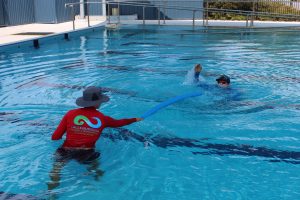 SISSS00129 Pool Lifeguard Skill set is recognised throughout Australia and gives you the skills and knowledge to supervise the safety of participants in aquatic recreation facilities and manage water-based rescues and emergencies.
SISSS00129 Pool Lifeguard Skill set is recognised throughout Australia and gives you the skills and knowledge to supervise the safety of participants in aquatic recreation facilities and manage water-based rescues and emergencies.
From working at your local community swimming pool or sports centre, through to major sporting events, the skills you’ll gain will get you job ready as a pool lifeguard and set you up for future career advancement as a supervisor, duty manager or facility manager or as a swimming teacher.
Delivery Model
The Skill set is delivered via a blended format involving the use of an online Learner Guide and assessments prior to the commencement of the course. This is followed by three consecutive days of face-to-face training and assessment in an aquatic environment with simulated or real work scenarios.
Location
All training and assessment days are held on the Gold Coast.
Online learning and assessment (approximately 4 hours to complete)
The online learning component gives you the time and space to learn and complete theory assessments at your own pace, at a time and place that suits you. The duration of this component will vary depending on your past experiences and knowledge. You must have successfully completed the online assessment prior to attending the practical face to face component of the course.
Face-to-face practical sessions (3 days)
These face-to-face practical sessions give you the opportunity to learn the skills, practice them and apply them in a real-life situation. You will receive feedback from your trainer and then you will complete the required assessment tasks.
Note: If you already have a current First Aid Certificate that will be valid for at least another 6 months, you may be able to complete the practical sessions in 2 days.
Costs
The cost to complete the Skill set is $380. If you have completed the course previously or have a current First Aid certificate that will be valid for at least another 6 months, please let us know as you may be eligible for a discount.
As Tallebudgera OEEC is a Queensland Government school, the RTO is not eligible to become a Skills Assure Supplier so is unable to provide services subsidised by the Department of Employment, Small Business and Training. This includes VET in Schools funding, the User Choice Program, apprenticeships or traineeships.
Participant Numbers
All face-to-face training and assessment blocks will run subject to minimum numbers and confirmation that the session will be going ahead will be sent two weeks prior to each scheduled session.
Course Requirements
In order to be able to complete this course successfully, you will need:
- Language, Literacy, Numeracy and Digital Technology skills including:
- reading skills to interpret statutory signage, warning signs and instructions regarding the use of First Aid and CPR resources and Automated External Defibrillators
- writing skills to complete workplace reports
- numeracy skills to perform simple calculations such as the rate of chest compressions and rescue breathing
- oral communication skills to make accurate verbal reports to emergency response services and workplace supervisors
- digital technology skills to read electronic learner resources and complete online assessments
- the physical ability to meet the following requirements:
- Perform aquatic rescues by completing a 25-metre swim and 25 metre non-contact tow of a conscious casualty with assisted landing in less than 1minute 45 seconds
- Assist two other team members with the removal of an unconscious person from the water
- Swim 200 metres in less than 6 minutes without using equipment
- Retrieve an object from the deepest water within the aquatic environment but no greater than 3 metres in depth.
- performing at least 2 minutes of uninterrupted single rescuer cardiopulmonary resuscitation (CPR) on adult and infant resuscitation manikins placed on the floor.
- access to a computer with internet access to complete online learning and assessments
- suitable sunsafe swimwear for practical tasks.
Learner Support
If you have any special learning or physical needs or if you are concerned about any of the above requirements, please contact us to discuss your concerns and to find out what support options are available. This includes Language, Literacy or Numeracy (LLN) needs or difficulties in accessing a computer and/or the internet to complete the online learning and assessment.
Units of Competency
On successful completion of the training and assessment activities, you will be awarded with a nationally recognised Statement of Attainment for the following Units of Competency:
HLTAID011 Provide first aid (credit transfer, minimum validity 6 months)
PUAEME001 Provide emergency care
PUAEME003 Administer oxygen in an emergency situation
SISCAQU002 Perform basic water rescues
SISCAQU006 Supervise clients in aquatic locations
SISCAQU007 Perform advanced water rescues
Note: HLTAID009 Provide cardiopulmonary resuscitation is also completed during this course as part of First Aid.
*SISSS00129 Pool Lifeguard Skill set has been superseded. The replacement Pool Lifeguard skill set SISSS00133 will be delivered mid-2023.
How to enrol
- Please contact your Trainer, Symeko Jochinke by email: sjoch0@eq.edu.au or mobile: 0400 721 493.
- Symeko will discuss training options with you and ensure the course is appropriate for you.
- You will then be sent an Enrolment Form and provided with additional information about when courses may be scheduled.
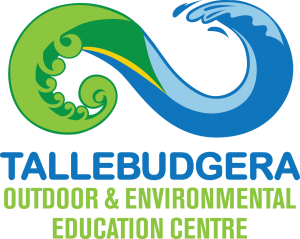

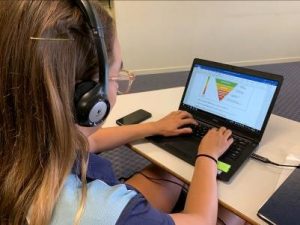 FSK20119 Certificate II in Skills for Work and Vocational Pathways is delivered in partnership with schools or alternative learning facilities as part of the Department of Education’s VET Pathways Program which is an agreement between First Nations Strategy and Partnerships and Tallebudgera Outdoor and Environmental Education Centre’s Registered Training Organisation. The program is targeted at but not limited to First Nations students.
FSK20119 Certificate II in Skills for Work and Vocational Pathways is delivered in partnership with schools or alternative learning facilities as part of the Department of Education’s VET Pathways Program which is an agreement between First Nations Strategy and Partnerships and Tallebudgera Outdoor and Environmental Education Centre’s Registered Training Organisation. The program is targeted at but not limited to First Nations students.
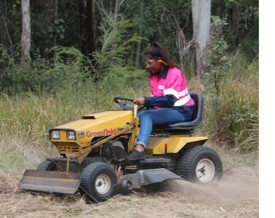 AHC21020 Certificate II in Conservation and Ecosystem Management is delivered in partnership with schools or alternative learning facilities as part of the Department of Education’s VET Pathways Program which is an agreement between First Nations Strategy and Partnerships and Tallebudgera Outdoor and Environmental Education Centre’s Registered Training Organisation. The program is targeted at but not limited to First Nations students.
AHC21020 Certificate II in Conservation and Ecosystem Management is delivered in partnership with schools or alternative learning facilities as part of the Department of Education’s VET Pathways Program which is an agreement between First Nations Strategy and Partnerships and Tallebudgera Outdoor and Environmental Education Centre’s Registered Training Organisation. The program is targeted at but not limited to First Nations students.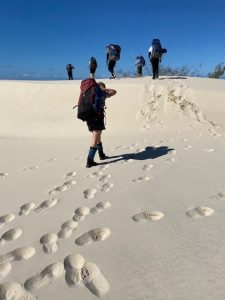 SIS30619 Certificate III in Outdoor Leadership provides learners with the skills and knowledge required to work as an outdoor recreation leader who leads and supervises dependent participants in recreational activities. These leaders have technical skills in a variety of recreational activities and have well-developed leadership skills to manage group participation, cohesion, operational logistics, risks and problems as they arise. They may work in commercial, not-for-profit and government organisations in a range of settings including indoor centres, outdoor adventure learning centres, camps or activity sites in the field.
SIS30619 Certificate III in Outdoor Leadership provides learners with the skills and knowledge required to work as an outdoor recreation leader who leads and supervises dependent participants in recreational activities. These leaders have technical skills in a variety of recreational activities and have well-developed leadership skills to manage group participation, cohesion, operational logistics, risks and problems as they arise. They may work in commercial, not-for-profit and government organisations in a range of settings including indoor centres, outdoor adventure learning centres, camps or activity sites in the field.